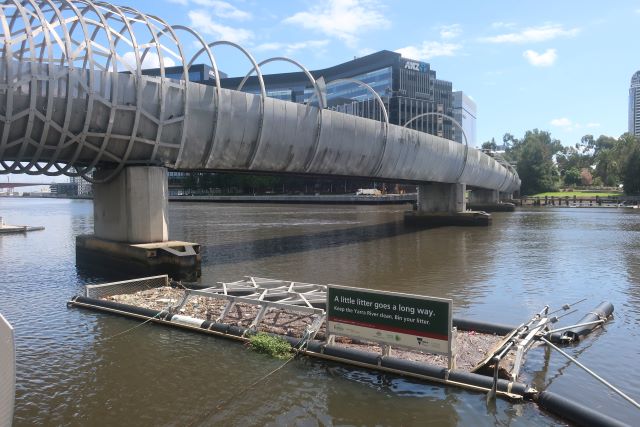
Polystyrene in the Yarra River
Polystyrene was the most abundant item collected at Westgate Park on Clean Up Australia Day.
And that was without access to the bouldered River bank which is thick with polystyrene because the tide was so high. It also didn’t include the large amounts of polystyrene caught up by the coastal salt bush, Atriplex cinearea, which grows so vigorously on the River bank.
It was frustrating because this has been a consistent finding at the clean up days held at Westgate Park over many years. Polystyrene is not ‘littered’ in the same way as a drink bottle left behind after a day’s fishing.
Where does it come from?
The Yarra Riverkeeper Association (YRKA) has focused on answering this deceptively simple question in several studies, each study building on the findings of the last.
The first stage of its investigations confirmed what was already plain, that polystyrene is the dominant litter item in the Yarra River. That formed the baseline.
The study Polystyrene Pollution in the Yarra River: sources and solutions found that polystyrene (EPS) escaped, or ‘leaked’, from every major source: construction sites, white goods retailers, manufacturers, recyclers and consumers. There seems to be a marked disconnect between the source of polystyrene and where it ends up – in a waterway.
Polystyrene is difficult to dispose of responsibly. It doesn’t readily fit into the bin, so it may be left alongside. Council waste services don’t pick up anything that is not in the bin. From that point, the EPS begins its journey of breaking up into every smaller pieces. Or, it may be broken up to fit into the bin and some pieces inevitably escape. Although the industry says that EPS is 100% recyclable, only a minute fraction of what is used is recycled as there are few facilities that are convenient. It is cheaper, and easier, to dispose of EPS to landfill. In landfill it takes up a lot of space.



There are 16 Bandalong litter traps on the Yarra River, managed and maintained by Parks Victoria. The traps are made in Australia and used internationally. Parks Victoria weighs the contents when they empty the traps, but until the YRKA study, the contents of the traps had not been systematically analysed.
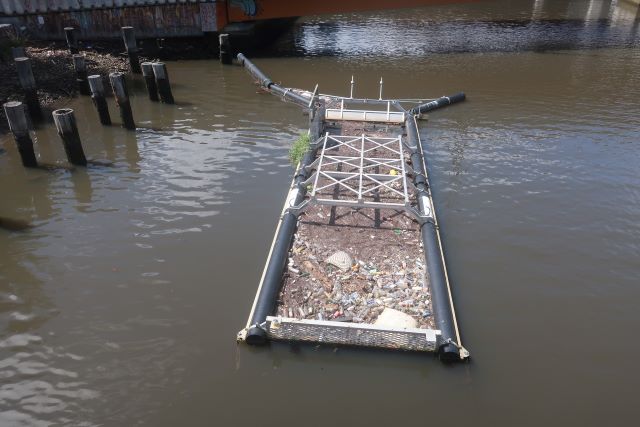
Anthony Despotellis, YRKA’s litter officer, designed a methodology to sample the contents of the traps. Every six weeks, he visited each of the traps on the Yarra Riverkeeper boat and took two samples using a square microplastics scoop.
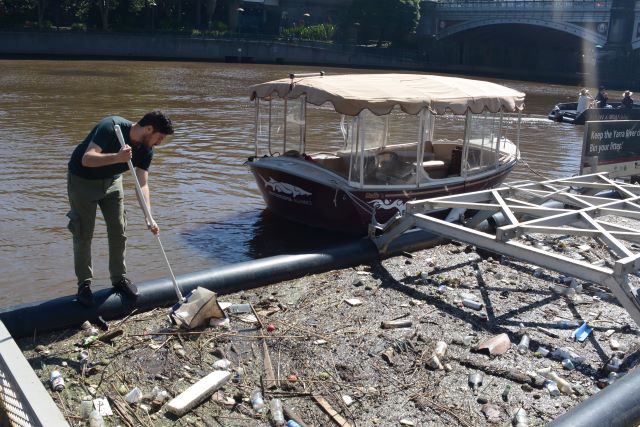
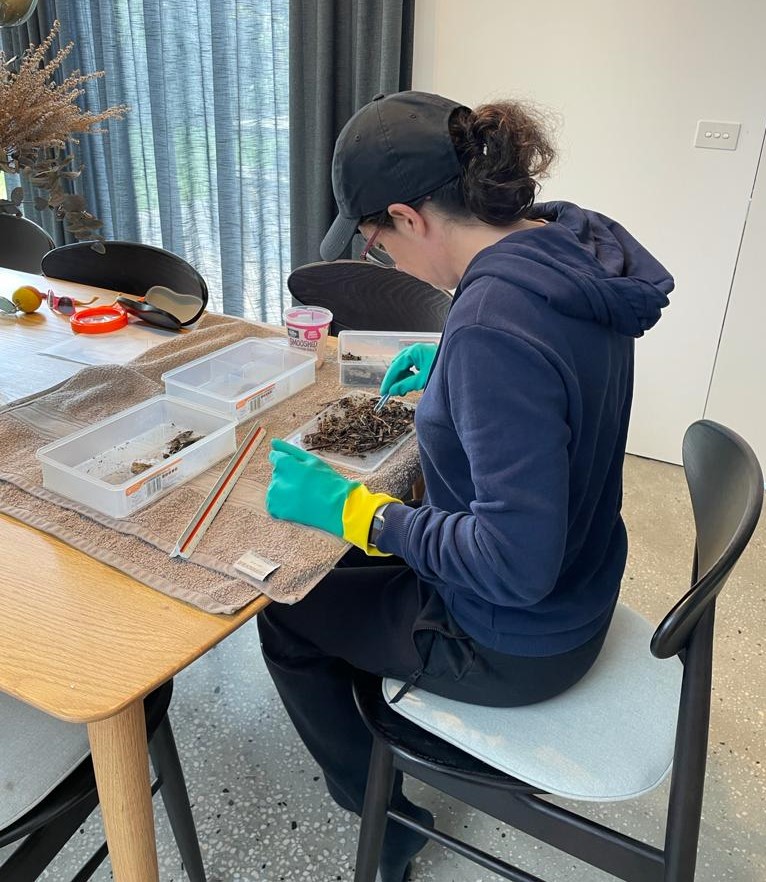
Prevented by the COVID lockdown from analysing the samples together with volunteers as he planned, instead the samples were sent to 50 volunteers for analysis. And yes, they counted every piece of polystyrene! After organic material, polystyrene was the most found material in each sample. The results were recorded and returned to Anthony for further analysis and extrapolation of the findings. Five cycles of samples were analysed.
The numbers are scary. The study concludes that the Bandalong Litter Traps capture 100 million pieces of polystyrene a year.
That figure does not include any of the polystyrene downstream of the litter traps, or any that floats unimpeded into the Bay.
Where to from here?
Alternatives to EPS are emerging but they are not common place yet. Mycelium, found in organic matter and consisting of fungi vegetative structures is ‘like nature’s own polystyrene’ says Despotellis.
While those alternative products and markets mature, he says, we must work with each sector to better manage and contain polystyrene. Such measures would include secure fences that don’t allow the escape of EPS at manufacturers and recyclers, better management practices on construction sites and at white goods retailers, and easier and more convenient recycling facilities. Education and awareness of the extent of the problem, its sources and solutions is fundamental.
The full findings and recommendations of the study will be released soon.
Anthony Despotellis holds a Bachelor of Industrial and Product Design with Honours. He is also a talented graphic designer. Anthony talks about the Yarra Riverkeeper Association’s work Polystyrene in the Yarra webinar, hosted in May 2020
The research on polystyrene has been funded by grants from the Department of Environment, Land, Water and Planning.
Barmand, S., Goodsell, K., Yardley, D., Kowalczyk, N. (2020). Polystyrene Pollution in the Yarra River: Sources and Solutions Yarra Riverkeeper Association
Bandalong International is based in Thomastown and has supplied and installed liter traps in Malaysia, Nigeria, US, Singapore and New Zealand
Expanded Polystyrene Australia
Janet Bolitho is on the Board of the Yarra Riverkeeper Association.
5 Comments
-
-
shake
Fascinating and informative. As always. Thanks Janet
-
John Milne
Fantastic then these Bandalong Litter Traps, Janet!!!

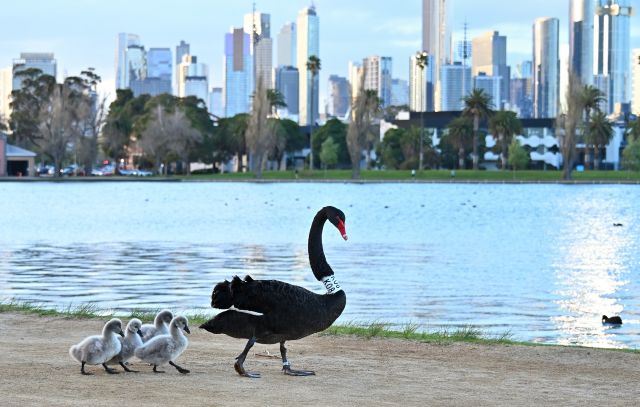

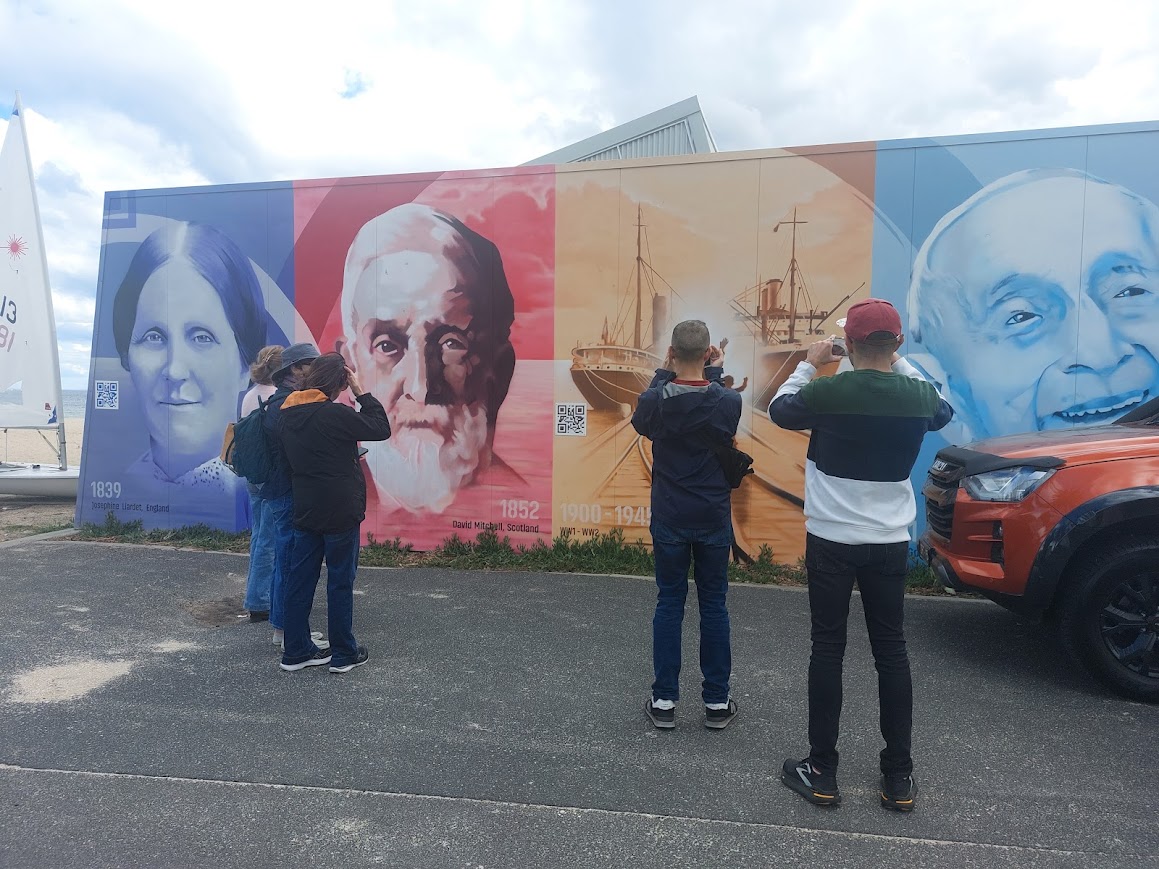
Heather Wheat
Smaller homes, fewer giant items! Scheez what an ugly consumer community we have become. But what about white goods packing using corrugated cardboard from recycled paper? Just a thought. Keep the faith Janet.